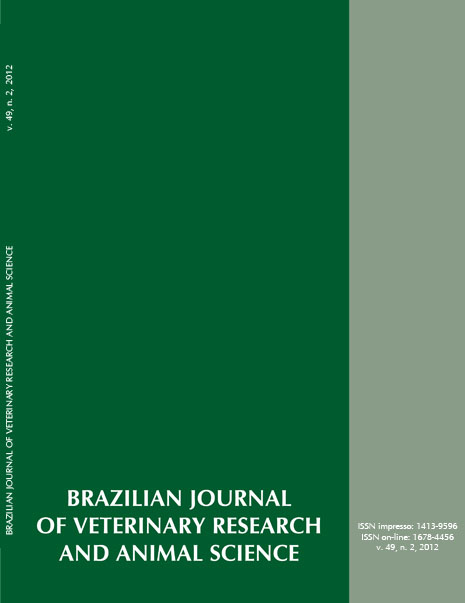Histology of ostrich liver (Struthio camelus, Linnaeus 1758)
DOI:
https://doi.org/10.11606/issn.2318-3659.v49i2p122-129Keywords:
Ostriches, Liver, Steatosis, Glycogen, CollagenAbstract
At present the ostrich (Struthio camelus) breeding has been showing a great economical potential, although yet there are not distinct patterns about the histology of its liver, which is an organ of key importance in terms of metabolism. The knowledge of its histology can help the detection of diseases and nutritional deficiencies of this bird. Twenty four ostriches with an average age of 12-18 months and average weight of 80-100 Kg, proceeding from Don Pig Abatteur, located at Botucatu, São Paulo, were used. The birds were slaughtered with and to bleeding. Liver samples were processed for light and electron transmission microscopic studies. Hematoxilin and eosin (HE), picrosirius, Gordon and Sweets, Sudan black and Schiff periodic acid (PAS) were respectively used to observe the liver morphology, collagen, reticular fibers, lipids and glycogen. The liver portal spaces were determined. An average of 5.68% of glycogen was observed. The lipidic content with an average of 9.83%. Collagen fibers at an average of 14.71%. Reticular fibers with an average of 5.96%. Through transmission electron microscopy we noticed in the hepaticyte cytoplasm the presence of numerous mithocondria, glycogen, several lipidic droplets, some lysosomes, granular endoplasmatic reticulum around the mithocondria, some stellate cells, erythrocytes, nucleus and degenerating cells, besides the central biliary canaliculus. The suggestive steatotic results might result from the animals nutritional status Our results demonstrated that ostrich and other birds hepatocytes are very similar.
Downloads
Downloads
Published
Issue
Section
License
The journal content is authorized under the Creative Commons BY-NC-SA license (summary of the license: https://





